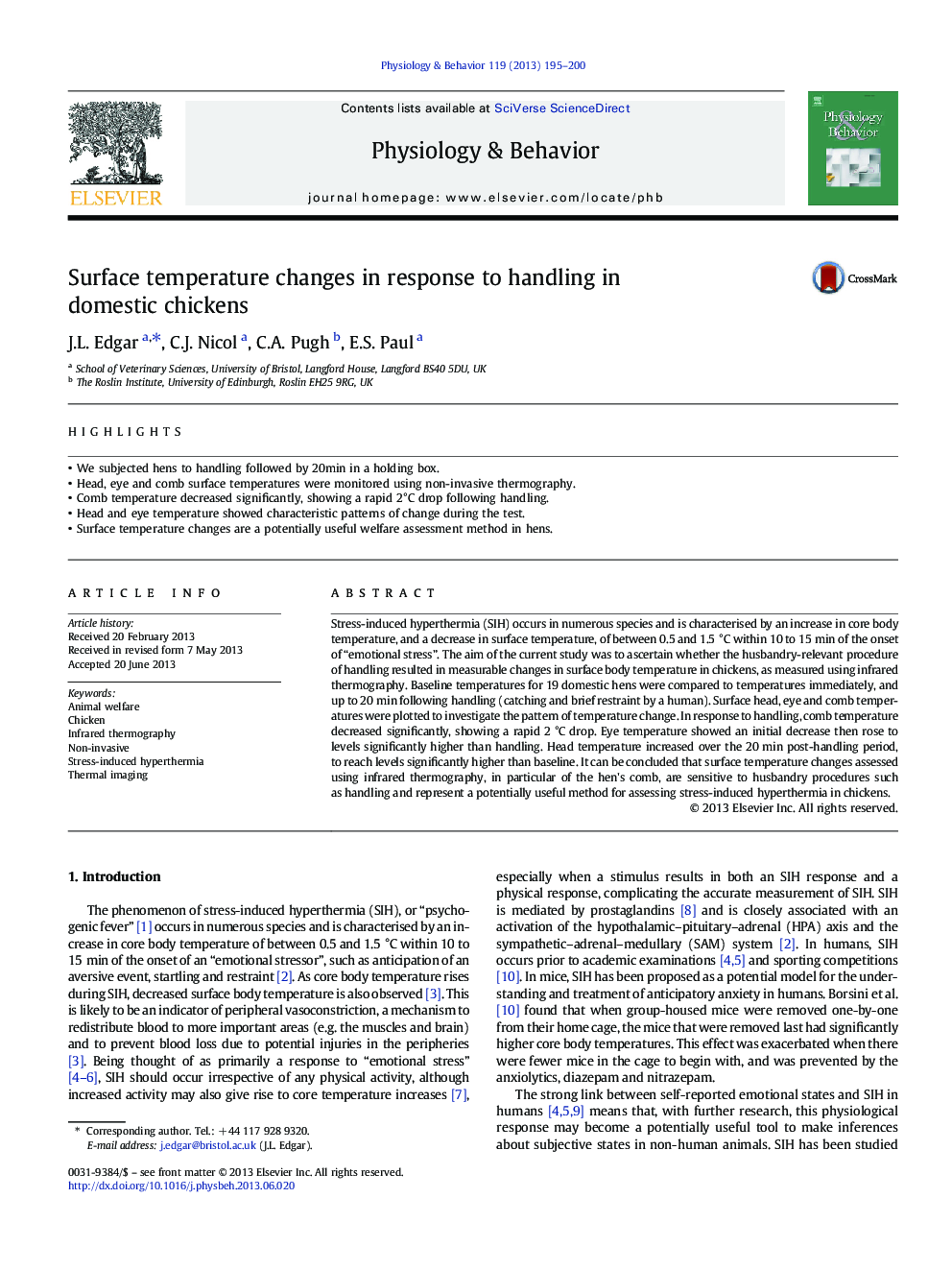| Article ID | Journal | Published Year | Pages | File Type |
|---|---|---|---|---|
| 5924820 | Physiology & Behavior | 2013 | 6 Pages |
â¢We subjected hens to handling followed by 20 min in a holding box.â¢Head, eye and comb surface temperatures were monitored using non-invasive thermography.â¢Comb temperature decreased significantly, showing a rapid 2 °C drop following handling.â¢Head and eye temperature showed characteristic patterns of change during the test.â¢Surface temperature changes are a potentially useful welfare assessment method in hens.
Stress-induced hyperthermia (SIH) occurs in numerous species and is characterised by an increase in core body temperature, and a decrease in surface temperature, of between 0.5 and 1.5 °C within 10 to 15 min of the onset of “emotional stress”. The aim of the current study was to ascertain whether the husbandry-relevant procedure of handling resulted in measurable changes in surface body temperature in chickens, as measured using infrared thermography. Baseline temperatures for 19 domestic hens were compared to temperatures immediately, and up to 20 min following handling (catching and brief restraint by a human). Surface head, eye and comb temperatures were plotted to investigate the pattern of temperature change. In response to handling, comb temperature decreased significantly, showing a rapid 2 °C drop. Eye temperature showed an initial decrease then rose to levels significantly higher than handling. Head temperature increased over the 20 min post-handling period, to reach levels significantly higher than baseline. It can be concluded that surface temperature changes assessed using infrared thermography, in particular of the hen's comb, are sensitive to husbandry procedures such as handling and represent a potentially useful method for assessing stress-induced hyperthermia in chickens.
